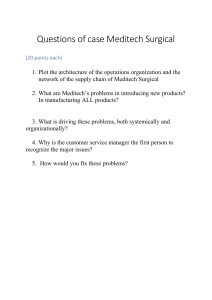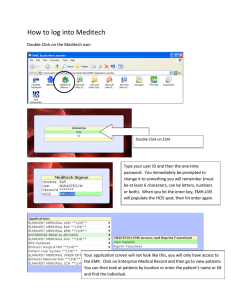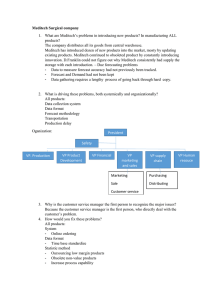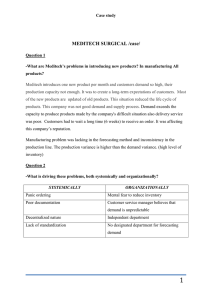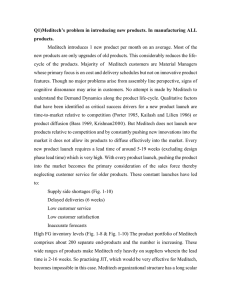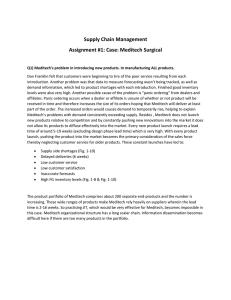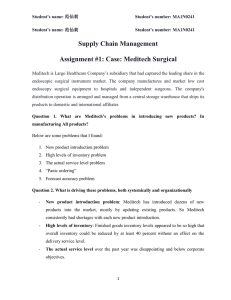1 Meditech’s problem in introducing new products. In manufacturing all products:
advertisement
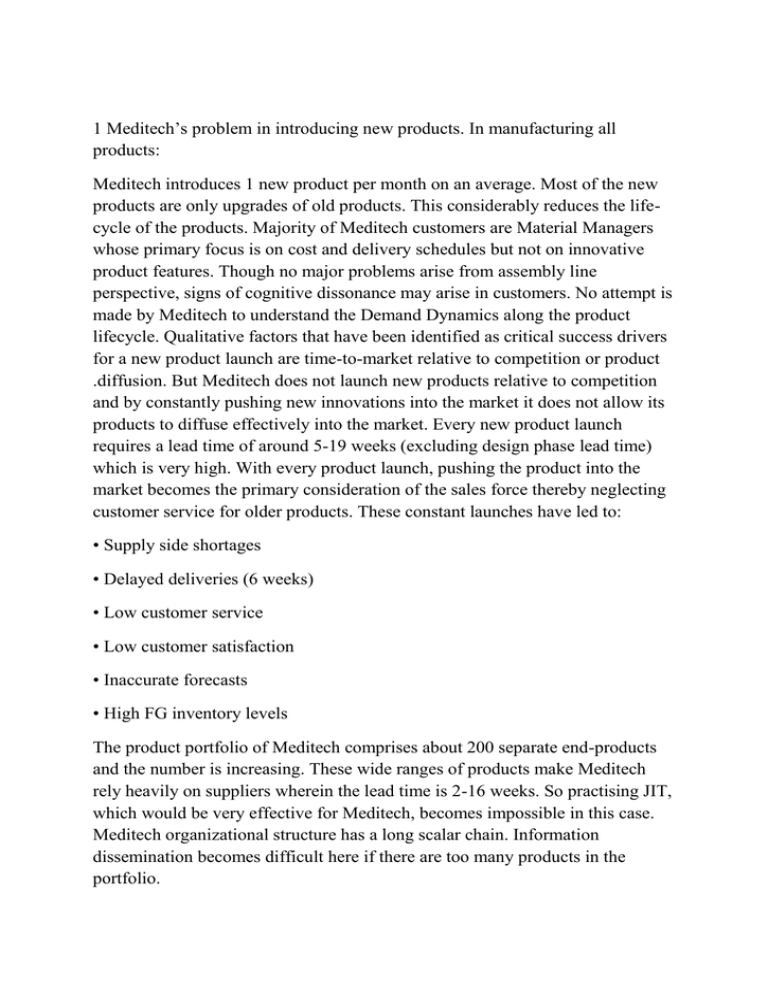
1 Meditech’s problem in introducing new products. In manufacturing all products: Meditech introduces 1 new product per month on an average. Most of the new products are only upgrades of old products. This considerably reduces the lifecycle of the products. Majority of Meditech customers are Material Managers whose primary focus is on cost and delivery schedules but not on innovative product features. Though no major problems arise from assembly line perspective, signs of cognitive dissonance may arise in customers. No attempt is made by Meditech to understand the Demand Dynamics along the product lifecycle. Qualitative factors that have been identified as critical success drivers for a new product launch are time-to-market relative to competition or product .diffusion. But Meditech does not launch new products relative to competition and by constantly pushing new innovations into the market it does not allow its products to diffuse effectively into the market. Every new product launch requires a lead time of around 5-19 weeks (excluding design phase lead time) which is very high. With every product launch, pushing the product into the market becomes the primary consideration of the sales force thereby neglecting customer service for older products. These constant launches have led to: • Supply side shortages • Delayed deliveries (6 weeks) • Low customer service • Low customer satisfaction • Inaccurate forecasts • High FG inventory levels The product portfolio of Meditech comprises about 200 separate end-products and the number is increasing. These wide ranges of products make Meditech rely heavily on suppliers wherein the lead time is 2-16 weeks. So practising JIT, which would be very effective for Meditech, becomes impossible in this case. Meditech organizational structure has a long scalar chain. Information dissemination becomes difficult here if there are too many products in the portfolio. 2) Cause of the problems, systematically and organizationally: New introducing product Panic ordering..-> bullwhip Long lead time of component part Variation of production schedules Problem of demand: Duplicate order Redundant order Panic order Problem of supply : Segregation management Information and sharing data format Bullwhip All products Data collection system Data format Forecast methodology Transportation Production delay Product development production sale customer service customer supplychain purchasing distributing supplier Organizationally: Mangement : very long scalar chain slow information flow weak strategies Manpower: focused on sales weak service levels 3.Why is customer service manager the first person to recognize the major issues? Because the customer SCM is the first person, who directly deal with the customer problem.The scalar chain from Customer Service Manager to the Customer Service Representative is only of two steps. The representatives work in direct contact with dealers and affiliates and are often in direct contact with hospital personnel i.e. their consumers. A general rule of thumb is “If you want the best feedback, ask your consumers”. This network would have proved effective for feedback-information flow. Mr. Dan Franklin himself held many meetings with hospital material managers. This brought forth the level of dissatisfaction amongst his customers, Meditech’s poor service levels and improper delivery schedules. 4. How would you fix these problems? The foremost thing we would do is implement an ERP System costing around $100,000. This would help in better data storage & warehousing, analysis and forecasting. We would reduce the frequency of new product launches. We would prefer a leaner product portfolio. We would lay emphasis on better forecasts with a shorter horizon of 1-2 months. We would maintain a safety stock so as to provide a service level of 95%. We would work to reduce the assembly cycle time from the current level of 2 weeks. We would look for new and better supplier relations to reduce the supplier lead time from the current level of 2-16 weeks.
